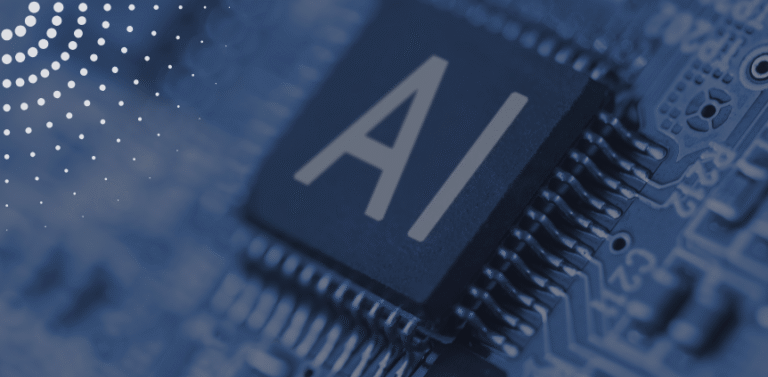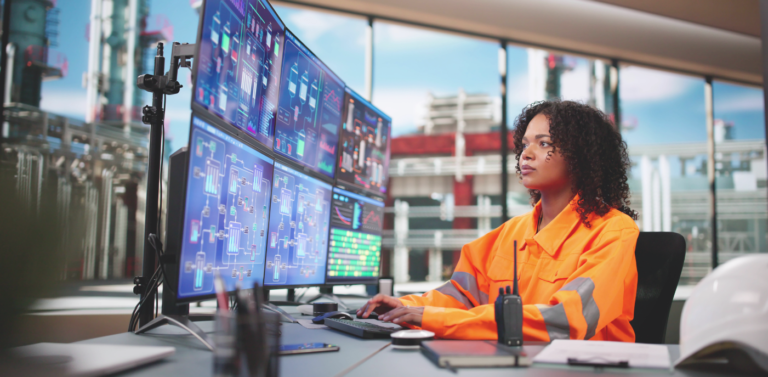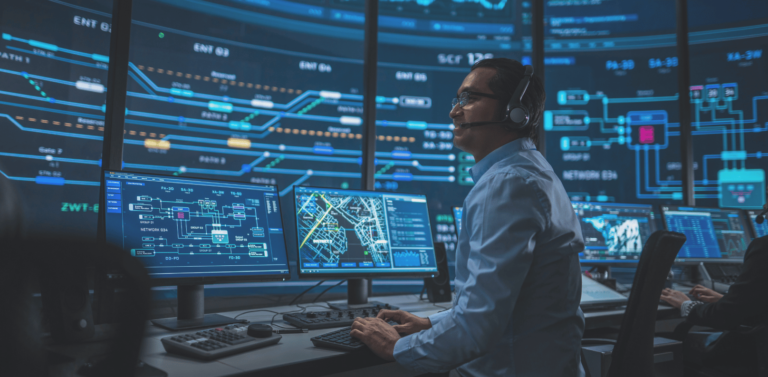When critical supply chains like energy production, transportation, and distribution run smoothly, we go about our daily lives without giving much thought to what powers all this activity. However, these large and complex industries do not operate by default. Instead, highly knowledgeable and professionally trained operators manage these supply chains from spaces known as control rooms.
This article sheds some light on what a control room is, exploring its significance across various industries and the technologies that empower operators. It also provides insights into how control rooms are evolving to become even more efficient in ensuring safe and reliable operations. Let’s dive into the vital dynamics of control rooms and the steps that can elevate your operations to new heights.
What is a Control Room?
A control room is a central space where operators monitor and manage complex industrial operations. Terms like Mission Control Center (MCC), Operating Control Center (OCC), Control Center Operation (CCO), Hub Control Center (HCC), and more, all refer to control rooms. However, what these spaces truly mean and how they impact our daily lives remains a mystery to most people.
While a quick Google or YouTube search can provide plenty of information about control rooms, it’s easy to overlook just how vital these spaces are to our daily lives. This post aims to demystify control rooms, shedding light on their significance in various industries and the essential role they play in keeping our society running smoothly.
Control Rooms in Popular Culture
Now, you might have a visual in your mind, likely gravitating to the famous images of NASA control rooms—”Houston, we have a problem.” And you see a massive room with what looks like hundreds of screens, each depicting various line drawings, calculation outputs, data displays, and digital representations of equipment on a rocket ship. These screens provide real-time data feeds, informing the team about the mission’s current status and serving as an early warning system for issue detection and resolution. Sounds important, right?
The Importance of Control Rooms
Well, similar types of control rooms are used globally across various heavy industries. These include electric grids, oil refineries, oil and gas pipelines, offshore oil platforms, chemical plants, SpaceX, NASA, coal power plants, hydropower plants, nuclear power plants, wind farms, and more. These control rooms are essential for monitoring and managing the operations that power and sustain our modern world.
Another control room that might come to mind is Homer Simpson’s workspace at the Springfield Nuclear Power Plant. This example should feel a bit more relatable since power plants of various types provide the electricity you use to charge the device you’re reading this on (unless you printed it, which I’m not here to judge—but that printer used electricity, too).
Homer is responsible for the safe and efficient operations of the nuclear power plant that powers Springfield. In various parody episodes, when Homer messes up, the power goes out in the town. This humorously but accurately depicts the critical role of control room operators in managing the infrastructure that enables our society to function.
The Role of Control Room Operators
Control room operators are the unsung heroes who rely on real-time data feeds displayed on various screens to inform them of the current status of operations and provide early warnings for issue detection and resolution. Their work is like the “operating system” for heavy industrial assets, or what I describe as “giant firmware.”
Consider the Windows operating system on your computer, which allows you to install applications like the web browser you’re using to read this. Similarly, the software in control rooms compiles data into visual formats, enabling operators to make and execute critical decisions. For example, in a hydropower plant, a SCADA screen (the operating system) might display real-time energy demand. This visual gives the control room operator an early warning, prompting them to activate another turbine to increase power output.
These operators possess the skill and focus required to manage these complex operations, ensuring the safe and efficient operation of essential infrastructure. Their decisions have immediate and significant impacts, affecting everything from the energy powering our homes to the safe transportation of fuel. Their expertise is not only about responding to what’s happening now but also about anticipating and preventing potential issues—truly making them the guardians of our modern world.
For the “giant firmware” analogy, think of your robot vacuum and its local software or firmware programmed to clean your floors daily. You can also communicate with your robot vacuum via an app on your phone to turn it on again if needed. Similarly, large pieces of equipment in heavy industrial facilities like refineries are connected by “giant firmware.” This software, installed at a local data center in the refinery, can be accessed via screens in the control room to operate the facility.
Technology in Control Rooms
The different technologies that enable effective control room operations include Supervisory Control and Data Acquisition Systems (SCADA), Distributed Control Systems (DCS), Process Data Historian Software, Management of Change software, and many other industry-specific tools essential for global critical infrastructure. Some people outside or adjacent to heavy industry are unaware of these technologies and often assume various things.
Misconceptions About Control Room Operations
The two most common misconception are that:
- These systems are fully automated, making control rooms unnecessary and/or
- These industries are so old that they lack the technology for digital visualization, causing companies to “fly blind.”
It happens that even executives in the heavy industry tend to hold these misconceptions. However, this is far from the truth. Existing control room technologies are excellent at providing real-time data feeds, informing operators about the current status of operations, and enabling early warnings for issue detection and resolution.
By “operation,” we mean processes such as fluid flowing through pipelines to gas stations or electricity moving through the grid to power our homes. The operators of these systems need the best tools available to ensure the safe and efficient operation of these critical public infrastructure systems.
The Future of Control Room Operations
The gap in all of these control rooms becomes apparent when we compare control room operations to the flight of commercial airplanes. A pilot in a plane and a control room operator in the heavy industry both bear the responsibility of safely operating an asset that can directly impact human life. However, pilots have auto-pilot, while heavy industry control rooms lack standardized software protocols to enable similar functionality.
This is an excellent analogy, as 95% of safety and environmental incidents in heavy industry are attributed to human error. Just as auto-pilot reduces human error for pilots, introducing similar automation for control room operators can decrease safety and environmental accidents. CruxOCM works to empower control room operators by automating critical infrastructure operations, starting with the oil pipeline infrastructure, which accounts for 83% of global oil and gas usage and is increasing.
We provide an “adaptive cruise control” experience for control room operators, reducing their workload and increasing the accuracy and efficiency of asset operations. We firmly believe that by improving the job and making it more enjoyable for control room operators, we will create a safer and more secure energy and heavy industrial future.
With RIPA™ platform and additional solutions like pipeBOT™ among others, we provide an “adaptive cruise control” experience for control room operators, reducing their workload and increasing the accuracy and efficiency of asset operations. We firmly believe that by improving the job and making it more enjoyable for control room operators, we will create a safer and more secure energy and heavy industrial future.
I hope you now recognize the vital role control room operators and control rooms play in our society. Take a moment to look around your room, feel your fingers on your phone or mouse, and think about the person in the control room who managed the facility that produced the plastic or energy needed for your device. The energy you’re using right now also comes from their efforts. If you ever meet a control room operator, be sure to thank them for keeping you safe and comfortable!







